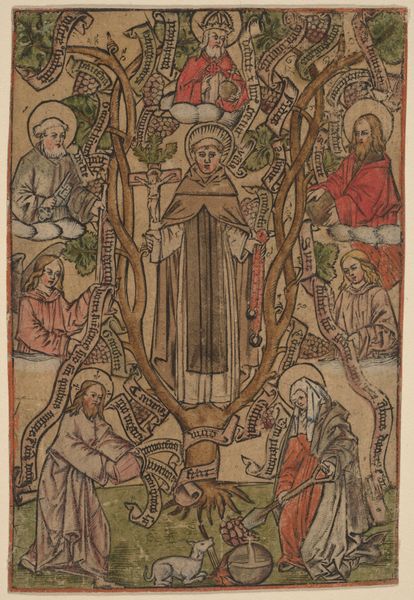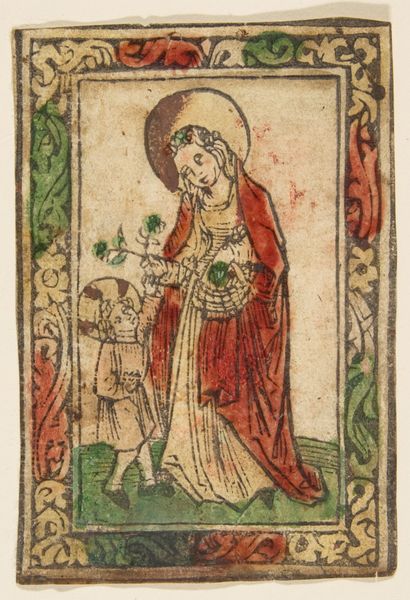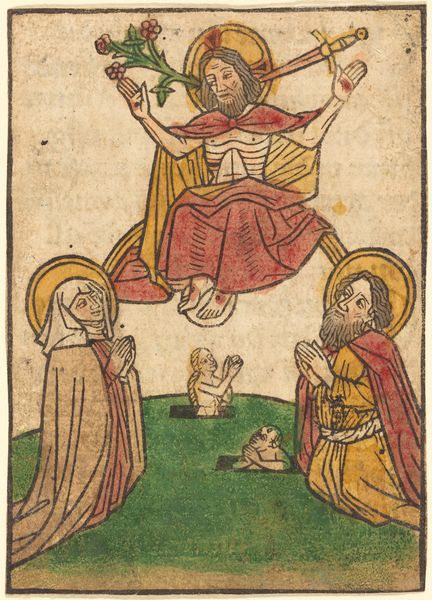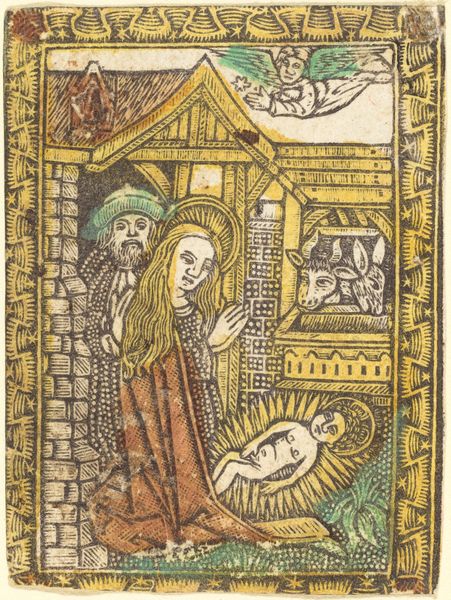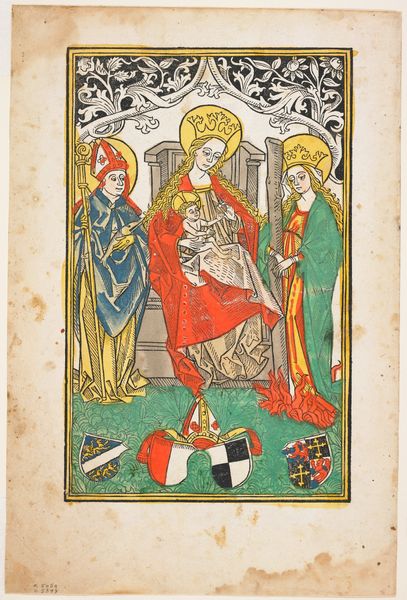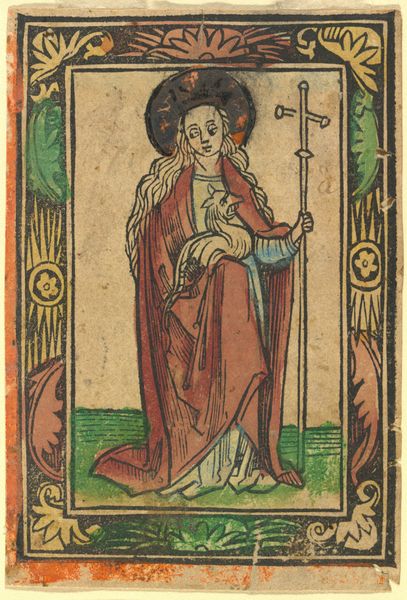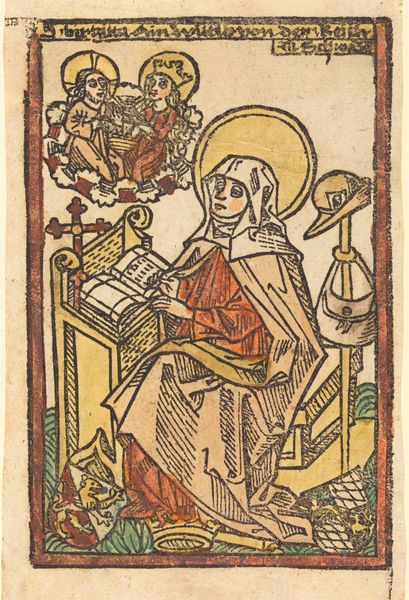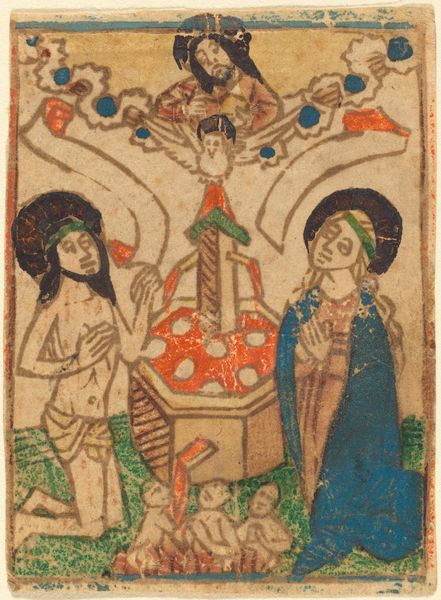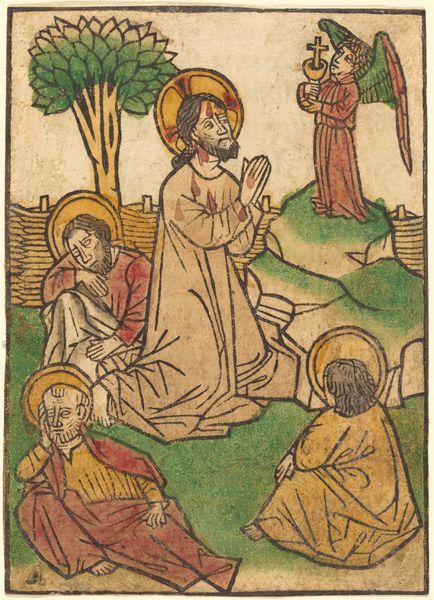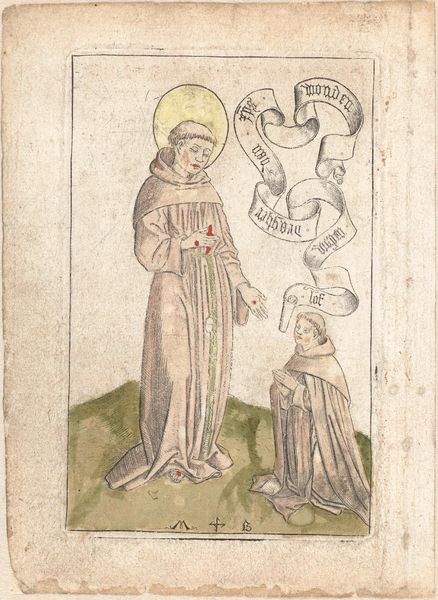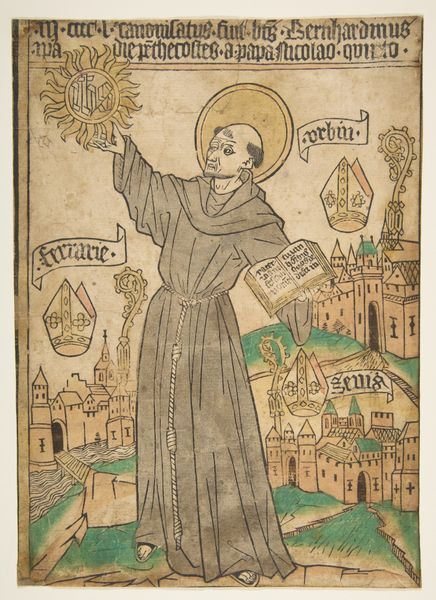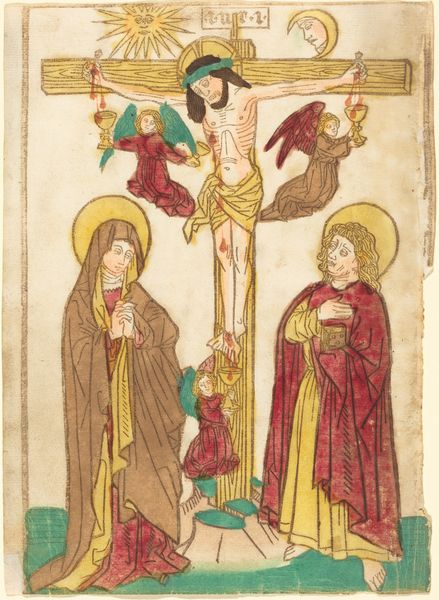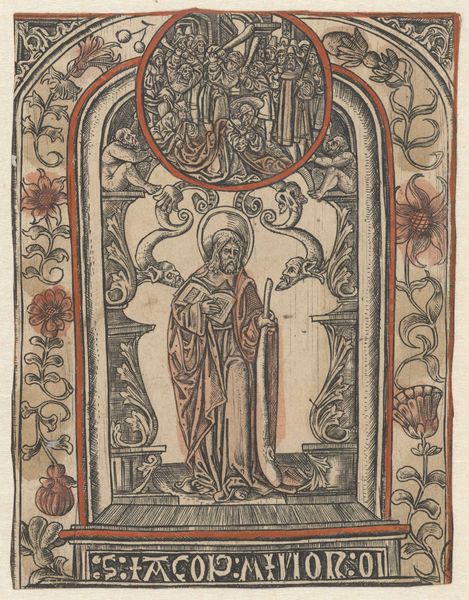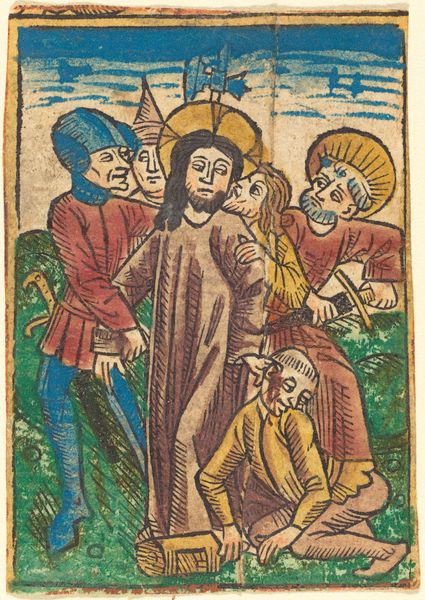
print, woodcut, engraving
#
medieval
# print
#
woodcut
#
engraving
Copyright: National Gallery of Art: CC0 1.0
Curator: Let’s take a look at "Saint Bridget," a woodcut with engraving dating back to around 1490, created by an anonymous artist. Editor: My first impression is a powerful sense of order combined with almost dreamlike imagery. The saint is surrounded by books, a symbolic landscape... It's meticulously crafted, but what stands out is how different the materials seem in the reproduction from how I imagine them in reality. Curator: It’s a fascinating piece reflecting the era's spiritual and intellectual landscape. Saint Bridget was a highly influential figure, and this work presents her amidst various symbols of her legacy and religious experience. We see the clergy gathered, celestial beings, and an indication of the earthly authority she navigated. It serves to show the powerful intersection of religion and social order. Editor: Agreed. But thinking about the materiality, I find myself wondering about the hands that actually carved the wood. We often separate “art” from “craft,” but the skill and labor involved in creating these precise lines, the pressure applied to the block…it all speaks to the very real, material effort of producing religious imagery, particularly given the political and socio-economic pressures within printmaking workshops. The printing block would have become quite an asset itself with the labor already performed. Curator: Absolutely, it’s critical to consider the social context. These images, circulating widely, played a crucial role in disseminating religious ideology. The print medium allowed for greater accessibility than illuminated manuscripts, influencing popular piety and reinforcing the church's teachings. And the level of artistic detail also would have elevated its role. Editor: That is so very true! I guess I am more focused on the object's means of production rather than it is distribution, in terms of power relations! The engraving and coloring process, probably with vegetable dyes, how standardized was it at the time. How did it come to have the coloring and texture of its end state...it's own form. Curator: Seeing it displayed today offers yet another layer, far from its original religious context, prompting contemplation on faith, artistry, and the intersection of those aspects throughout our understanding of historical practices and modern display. Editor: Agreed. It pushes us to confront the physicality of belief. I wonder how it felt when it first came off the press. An ephemeral manifestation of something solid, even divine, transformed through labor, materials and a very long print run... Something about the intersection of the ethereal and the practical is what I love most.
Comments
No comments
Be the first to comment and join the conversation on the ultimate creative platform.
